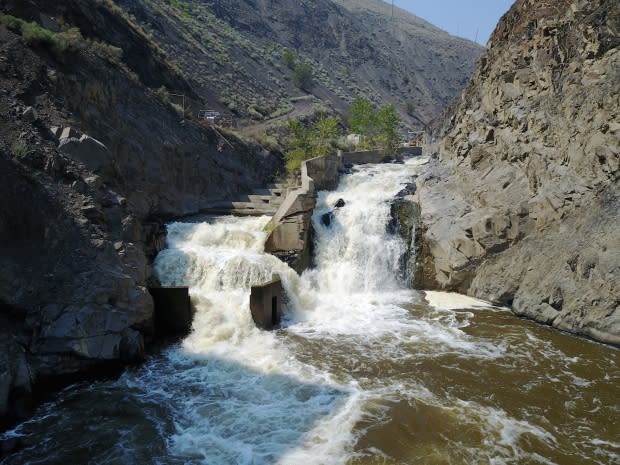Catch and release: Spawning salmon being moved around broken fishway
The Bonaparte Indian Band, Secwepemc Fisheries Commission and the Deparment of Fisheries and Oceans Canada are working together to catch salmon and transport them around a broken fishway on the Bonaparte River, so they can reach their spawning grounds.
The Pacific Salmon Foundation announced it is giving $40,000 to the Secwepemc Fisheries Commission and Shuswap Nation Tribal Council to install a fence to capture returning chinook July 1, and returning coho starting Sept.15.
"There is an extremely limited amount of spawning habitat below the fishway, but well over 100 kilometres of habitat upstream," said Aaron Gillespie, operations manager for the Secwepemc Fisheries Commission, in a statement.
"Without this project there will once again be a near complete loss of another year of chinook and coho, just like our steelhead stocks which were prevented from migrating upstream last year."
A fishway, also known as a fish ladder, is a man-made structure that helps fish get past an obstacle in the river.
Last year, only five chinook were able to get past the broken fishway, said Jason Hwang, vice-president of the Pacific Salmon Foundation.
"The natural forces of falling water and a river can put a lot of erosion or power into a man-made structure, and this one has been undermined a little bit, and the bedrock around it has been eroding and the concrete itself has been eroding," said Hwang.
"So, it's essentially broken and water isn't flowing nicely through it to allow fish to migrate up in the normal way that it was designed, and it's currently not really doing its job."
Temporary fix
The fishway wasn't fixed in time for this year's spawning season because water flows were much higher than expected this winter, Hwang told Daybreak South host Chris Walker.
Biologists believe that the higher watershed may be a result of the massive Elephant Hill wildfire in 2017, changing how well the soil is able to absorb water.

"The flows as I understand it, were five to six times what they normally would be, and it's suspected that that might be a result of changes in the watershed stemming from the giant Elephant Hill wildfire that happened," said Hwang.
Crews from the Deparment of Fisheries and Oceans Canada are hoping to go into the river later this summer to repair the fishway, he added.
Transporting salmon
Chinook are expected to arrive any day now.
Crews are mobilizing this week to build a fence that will guide fish into a trap so they can be put into a tank on the back of a truck and transported down the road, past the fishway, and released back into the river, explained Hwang.
"Catching them is stressful and putting them in a tank, but they can recover from that and carry their way on to migrate," he said.
Hwang isn't sure how many fish they will get back this year. In the past, they have seen 3,000 chinook and, in really big years, over 10,000.
However, chinook and coho are in decline in some parts of B.C.
"The Bonaparte is experiencing what some of the other rivers in the Fraser are experiencing, which is a really significant decline in chinook populations. The Nicola, as an example, had a decline of around 95 per cent between 2014 and 2018," said Hwang.
"If runs are really good, it could be in the thousands, but it may be well less than that."

